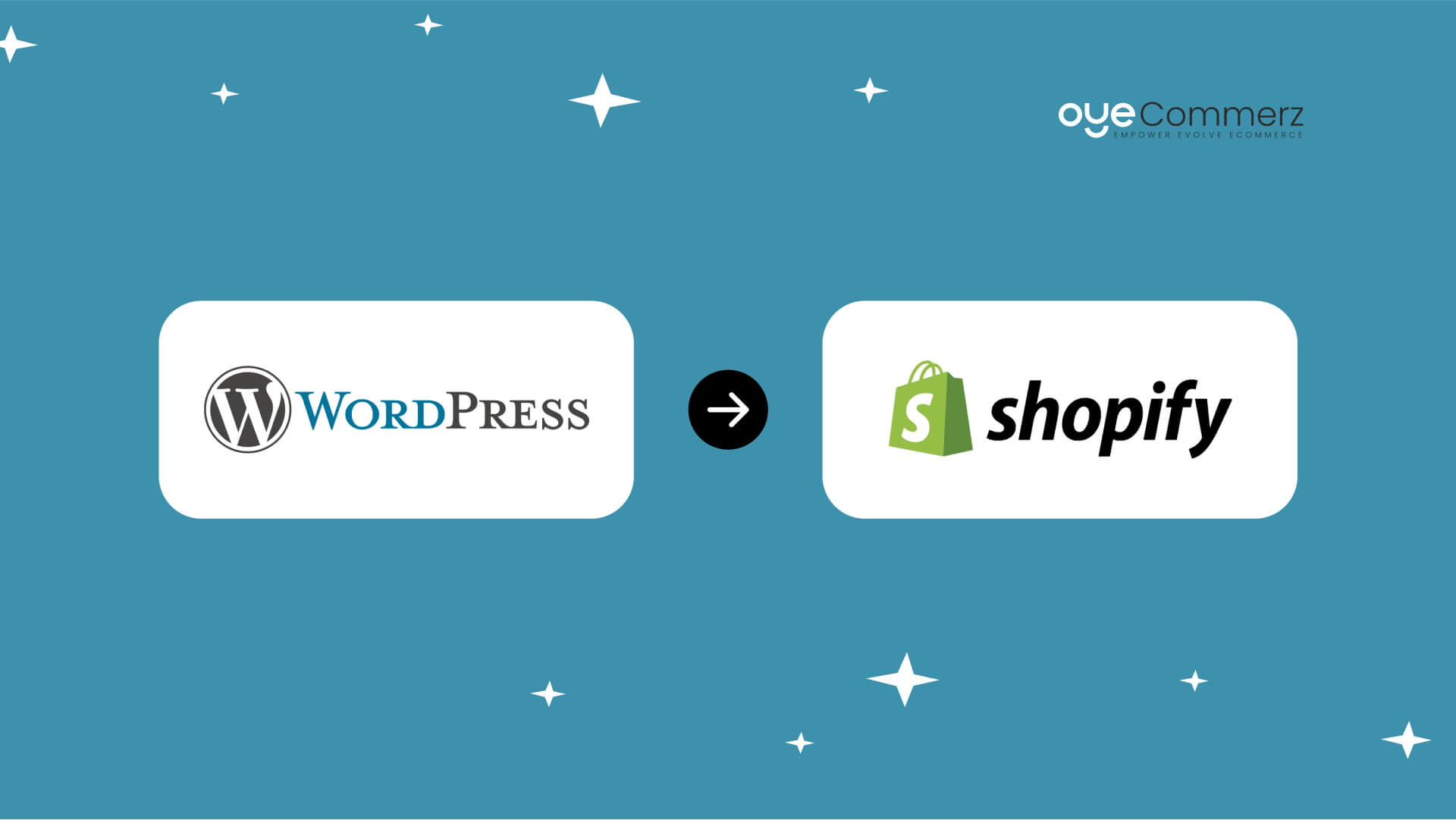Transitioning from WordPress to Shopify is an promising step toward optimizing your e-commerce processes. As businesses grow, choosing a platform that aligns with growth potential, UX, and customization is essential. Shopify is widely recognized as a preferred choice for online merchants, offering unmatched adaptability, security, and ease of use. In this guide, we will delve into the transformative impact of this migration, highlight the advantages, and share practical tips to facilitate a smooth transition.
1. Why Migrate from WordPress to Shopify?
WordPress, paired with WooCommerce, continues to support countless online stores. However, as businesses expand, issues like reliance on plugins, security vulnerabilities, and complex setups often obstruct progress. Shopify, designed explicitly for e-commerce, addresses these concerns with an comprehensive, user-friendly solution. Real data back this transition—Shopify powers over 4.4 million websites globally, with a reported 10% boost to sales conversion rates for numerous merchants after migration.
2. Key Benefits of Shopify for E-commerce Success
Shopify’s powerful platform is tailored for expanding businesses. Its notable features are:
- Effortless Design Flexibility: Shopify offers over 80 professionally designed themes.
- Built-in Features: Features like Shopify Payments and integrated SEO streamline operations.
- Global Reach: Currency versatility and localization features enable businesses to expand internationally.
Additionally, Shopify boasts an uptime rate of 99.98%, guaranteeing your store remains accessible.
3. Preparing for WordPress to Shopify Migration
Before migrating, evaluate your current store. Review product data, client information, and search engine rankings. Resources such as Shopify’s Migration Kit or external tools help ease the transition. Develop a comprehensive plan, ensuring all resources—item details, images, and articles—are ready for seamless import.
4. Data Migration: A Critical Step
Transferring your data is a cornerstone of a successful platform switch. When moving from WordPress to Shopify, focus on:
- Inventory Details: SKU, descriptions, and groupings.
- Client Information: Emails, order history, and preferences.
- SEO Optimization: Retain meta tags, URLs, and redirects to maintain search rankings.
Leverage apps like LitExtension to facilitate seamless migration while reducing mistakes.
5. Tailoring Your Shopify Store to Fit Your Brand
Post-migration, personalizing your Shopify store ensures it aligns with your brand. Take advantage of Shopify’s intuitive page builder to create layouts with ease. Shopify's templates are optimized for all devices, providing a seamless UX across platforms—a critical factor, given 74% of e-commerce traffic is generated by mobile users.
6. How to Protect Your SEO Rankings When Switching Platforms
Search engine optimization is crucial for preserving your visibility during migration. Shopify is highly optimized for search engines with organized link formatting, preloaded features, and smooth content management. Make sure you:
- Implement 301 redirects for old URLs.
- Enhance updated content with targeted phrases.
- Leverage plugins like Plug in SEO to monitor performance after the switch.
7. Essential Tests After Migrating to Shopify
Once the migration is complete, run detailed checks.
Check: - Website speed (Shopify delivers faster speeds in contrast with WordPress).
- Payment integration reliability and checkout processes.
- Adaptability across devices.
Testing ensures your store delivers a smooth shopping journey from day one.
8. Real-Life Success Story
An example of effective platform switching is Gymshark, a sportswear company that moved to Shopify. Post-migration, the company experienced a 60% boost in mobile sales and reduced site downtime. This showcases the potential of Shopify in driving online business success.
9. Overcoming Common Migration Issues
Migration comes with challenges, such as data integrity and adjusting tailored features. However, Shopify’s extensive assistance and external professionals make overcoming these hurdles manageable. Collaborating with qualified Shopify developers ensures a trouble-free transition.
10. Making the Switch: The First Step Toward Success
Switching from WP to Shopify represents a strategic decision to online WordPress vs. Shopify for eCommerce retail. By Best Shopify migration services focusing on growth, simplifying management, and improving buyer satisfaction, Shopify enables companies to succeed in challenging industries.
Conclusion
Switching from WP to Shopify offers a smart solution that can significantly boost your online business performance. With a robust migration plan, the right tools, and professional guidance, you can unlock new success milestones.
Ready to make the leap? Reach out today to learn how our Shopify migration services can revolutionize your online store. Get in touch today, or ask yourself: Is it time to seize Shopify’s advantages for your store?
